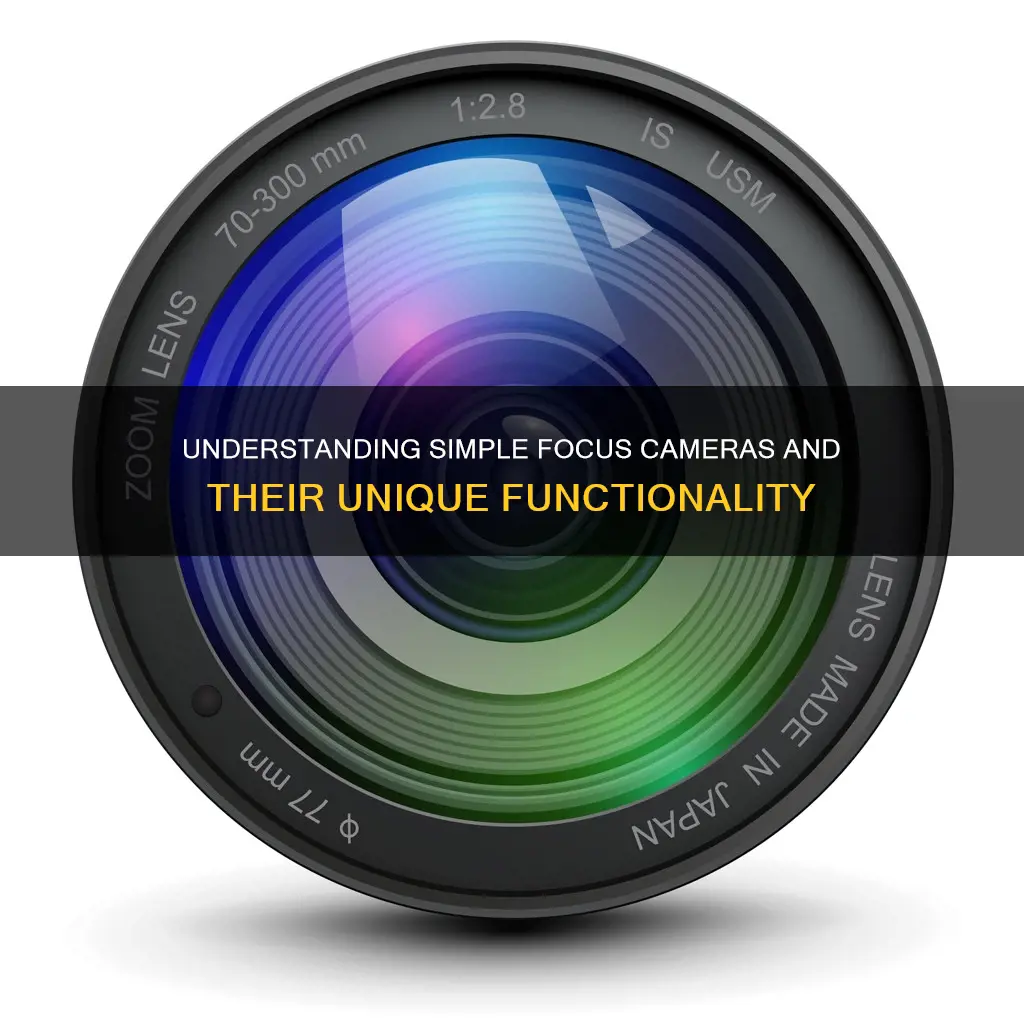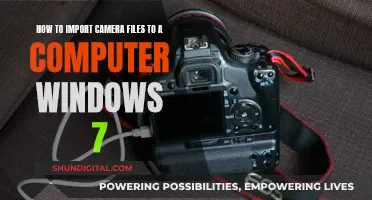
Focus is a crucial aspect of photography, and modern cameras offer a range of autofocus (AF) modes to ensure images are sharp. Autofocus refers to the mechanism that automatically moves the elements within the lens to achieve the best focus. This can be done through phase detection or contrast detection. Phase detection is commonly found in DSLR cameras and is very fast, making it great for tracking moving objects. Contrast detection is used in mirrorless cameras, point-and-shoot cameras, and DSLRs in live view mode. It is slower but more accurate, making it better suited for product or landscape photography.
Different AF modes include single-shot/single-servo focus, where only one focus point is used and remains fixed until the photographer refocuses; continuous focusing/continuous-servo, where the camera continuously monitors the distance of the subject and readjusts focus as needed; and automatic autofocus, which is a mix of the two.
Manual focus mode (MF) is also an option, where the photographer manually adjusts the focus ring of the camera. This is useful when the camera struggles to focus automatically or when taking a series of images where focus should remain constant.

Manual Focus Mode (MF)
MF mode is useful in situations where autofocus may struggle, such as in low-light conditions or when the subject is heavily backlit. It is also beneficial for macro photography, as it allows precise control over the narrow plane of focus. Additionally, MF can be used to create artistic effects, such as a dreamy, blurred background.
To use MF mode, photographers adjust the focus ring on their lens until the desired subject is sharp. This process can be time-consuming and requires skill, especially when compared to the convenience and speed of modern autofocus systems. However, MF mode provides an advantage in challenging lighting conditions or when precise focus adjustments are required.
MF mode is typically selected through a switch on the lens or via a setting in the camera's menu, depending on the camera model. Once in MF mode, photographers can utilise tools like Focus Magnifier and MF Assist to fine-tune their focus and ensure their subject is sharp.
Charging a Fuji X-30: A Quick Guide to Powering Up
You may want to see also

Autofocus Mode
There are different types of autofocus modes, each suited to different shooting scenarios. Here are some of the most common autofocus modes:
Single-Point Autofocus
Single-Point Autofocus lets you manually select a single point in your frame for the camera to focus on. It's perfect for static subjects, where you want to control exactly where the focus falls.
Continuous Autofocus
With Continuous Autofocus, your camera continuously adjusts focus on your subject, even when it's moving. It's ideal for photographing moving subjects like athletes or wildlife.
Hybrid Autofocus
Hybrid Autofocus combines the best of both phase-detection and contrast-detection autofocus systems, making it speedy and accurate and ideal for a range of shooting conditions.
Automatic Area Autofocus
In Automatic Area Autofocus, the camera decides which area of the frame to focus on. This mode is generally best suited for shooting scenes with little movement or simple compositions where the subject is in the centre of the frame.
Single-Point Area Autofocus
Single-Point Area Autofocus allows the photographer to manually choose one point in the frame for the camera to focus on. This mode provides precise control over the focus point, making it ideal for portraits, macro photography, and other scenarios where accuracy is crucial.
Dynamic Area Autofocus
Dynamic Area Autofocus uses a group of autofocus points surrounding the manually selected focus point to track a moving subject. If the subject briefly leaves the selected point, the camera will use the surrounding points to maintain focus. This mode is best used when shooting moving subjects, like in sports or wildlife photography.
Group Area Autofocus
In Group Area Autofocus, instead of selecting a single focus point, you can select a group of points. The camera will focus on the closest subject within the chosen group of points. It's particularly useful when the subject is difficult to isolate with a single point, like in bird or sports photography.
Eye Autofocus
Eye Autofocus automatically detects and focuses on the subject's eye. It's especially useful for portrait photography where focus on the eyes is critical.
When to Use Autofocus
Autofocus is generally best used when you're shooting moving subjects or when you need quick and accurate focusing. It's also useful in low-light conditions or when your camera is having trouble locking focus manually.
However, there may be times when manual focus is a better choice, such as when you want full control over the creative aspects of focus or when you're shooting in difficult lighting conditions. Ultimately, the best focus mode depends on your specific needs and preferences.
Charged Camera Batteries: Marking Them Efficiently
You may want to see also

Phase Detection
Inside your camera, there are prisms that split the image you see into two images. These images are projected onto a phase-detect sensor. This sensor instructs the lens to make adjustments until the two images align, and the subject is in focus. This process is very fast and is suitable for action photography or capturing moving subjects. It is also useful for understanding the depth of field in an image.
Browning Trail Cameras: Maximizing Battery Life
You may want to see also

Contrast Detection
How it Works
The camera adjusts the lens incrementally, seeking the point where contrast is highest, indicating the sharpest focus. This is why it is slower than phase detection autofocus.
Benefits
Drawbacks
When to Use It
Adjusting Focus on Lorex Cameras: A Step-by-Step Guide
You may want to see also

Focus Points
Single Focus Point
When using a single focus point, the camera focuses on a specific area of the scene, allowing for precise control over the point of focus. This technique is particularly useful for portraits, macro photography, and other scenarios where accuracy is crucial. It enables photographers to ensure that a specific element, such as the eyes in a portrait, are in sharp focus, while the surrounding areas may gradually blur out.
Multiple Focus Points
On the other hand, utilising multiple focus points allows the camera to track moving subjects more effectively and maintain focus even if the subject briefly leaves the selected point. This technique is ideal for capturing moving subjects, such as in sports or wildlife photography. By activating several focus points, the camera has a higher chance of keeping the subject in focus, even if it moves across the frame.
Focus Point Layouts
Different camera brands and models offer varying layouts and numbers of focus points. For example, a camera may offer a grid of focus points spread across the viewfinder, allowing for greater flexibility in composition. Some cameras may have more focus points in the centre of the frame, as this is typically where the most important elements of a scene are placed.
Choosing the Right Focus Points
The choice between using a single or multiple focus points depends on the subject and the desired composition. For stationary subjects, a single focus point is often sufficient and allows for precise control. In contrast, for moving subjects, multiple focus points are beneficial as they provide a higher chance of maintaining focus. Additionally, when capturing scenes with shallow depth of field, using multiple focus points can help ensure that the desired elements remain in focus.
Limitations and Challenges
While focus points are a powerful tool, they have certain limitations. For instance, small subjects that occupy a small portion of the frame may be challenging to capture using a single focus point, as the camera might struggle to detect them. In such cases, moving closer or switching to multiple focus points can improve the camera's ability to focus accurately.
Furthermore, vertical lines and low-contrast scenes can also pose challenges for autofocus systems, potentially resulting in focusing errors. Understanding these limitations and the specific capabilities of your camera's autofocus system is essential for achieving the desired results.
Mastering Manual Focus with the Lumix 300FZ
You may want to see also
Frequently asked questions
Autofocus is when the camera system automatically focuses on a subject, either one that you've selected or one that it chooses for you. Manual focus is when the photographer manually adjusts the focus ring on the camera lens.
Autofocus is more convenient and is usually faster and more accurate, especially when tracking a moving subject. However, it may focus incorrectly and it offers limited control.
Manual focus gives the photographer full control over the focus, which is useful for certain creative effects. It also tends to perform better in low light conditions and difficult scenes. However, it is more time-consuming and requires more skill.







